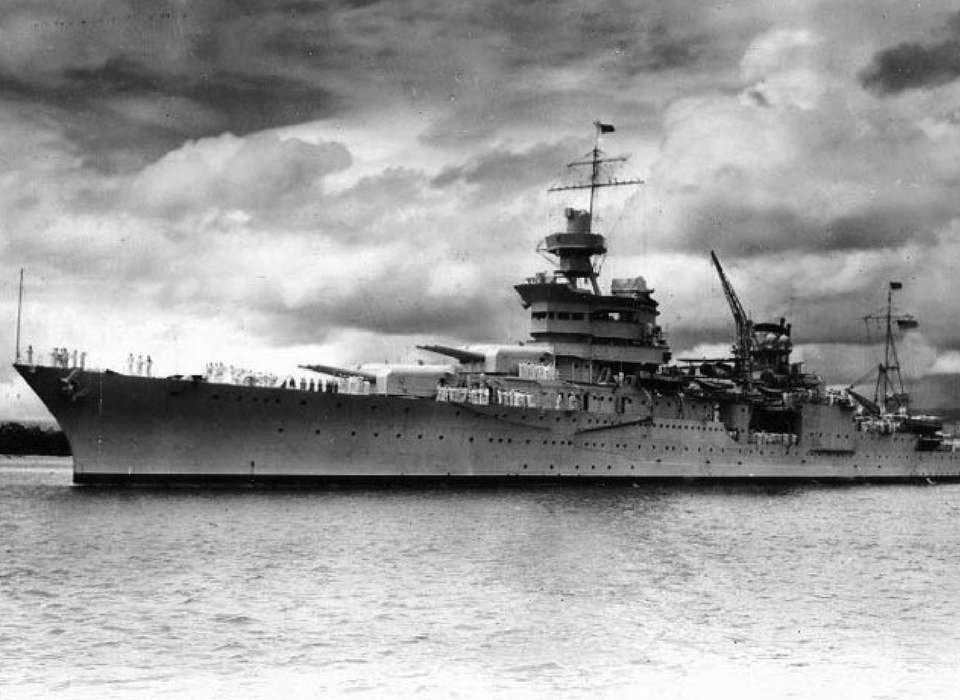VERY RARE! WWII 1945 Chester Nimitz COMMANDER IN CHEIF PACIFIC FLEET US Navy Pacific Theater "Escort & Blackout Zone" Map





























VERY RARE! WWII 1945 Chester Nimitz COMMANDER IN CHEIF PACIFIC FLEET US Navy Pacific Theater "Escort & Blackout Zone" Map
Comes with a hand-signed C.O.A.
This incredibly rare and museum-grade WWII 1945 Pacific Theater combat operations map is only one of a very small handful to exist of the CONFIDENTIAL marked U.S.N. Escort and Blackout Zone map. Marked “ISSUED BY THE COMMANDER IN CHEIF, PACIFIC FLEET AND PACIFIC OCEAN AREAS” this map is updated as of JULY 8th, 1945.
After the Japanese attack on Pearl Harbor (December 1941), Chester W. Nimitz was elevated to commander in chief of the Pacific Fleet, a command that brought both land and sea forces under his authority. By June 1942 he had proudly announced the decisive victory at the Battle of Midway and the Coral Sea, where enemy losses were 10 times greater than those of the United States at Pearl Harbor. In succeeding years, the historic battles of the Solomon Islands (1942–43), the Gilbert Islands (1943), the Marshalls, Marianas, Palaus, and Philippines (1944), and Iwo Jima and Okinawa (1945) were fought under his direction.
What makes this Pacific Theater chart so rare is that this limited print was produced just one month prior to the atomic bombing of Hiroshima and Nagasaki in August 1945. This USN vessel escort and blackout map was the exact same map type that was also distributed to the infamous USS Indianapolis (CA-35) while on the TOP SECRET mission of transporting the atomic bomb cargo in the Pacific Theater.
World War II was a global conflict that required complex strategies and tactics to ensure victory. In the Pacific Theater, the United States Navy played a pivotal role in the Allied effort to defeat Japan. By July and August of 1945, the war had reached a critical juncture, with the United States preparing to launch Operation Downfall, a massive invasion of Japan. In this context, the establishment of escort and blackout zones by the US Navy became crucial in ensuring the success of their operations and maintaining the element of surprise.
The Pacific Theater and the Road to 1945:
The Pacific Theater of World War II was characterized by its vast expanse, spanning thousands of miles across the Pacific Ocean. The US Navy was tasked with securing the sea routes necessary for the transportation of troops, supplies, and equipment to support Allied operations in the region. By 1945, the Allies had achieved significant victories in the Pacific, including the battles of Midway, Guadalcanal, and Leyte Gulf, which had weakened Japan's naval and air power. These successes paved the way for the final assault on Japan's home islands.
Operation Downfall and the Need for Escort Zones:
Operation Downfall was the codename for the Allied plan to invade Japan. It consisted of two phases: Operation Olympic, the invasion of the southern Japanese island of Kyushu, and Operation Coronet, the subsequent invasion of the Tokyo Plain. The success of these operations depended on the ability to transport a massive force across the Pacific while maintaining the element of surprise. To achieve this, the US Navy established escort zones in July and August of 1945.
Escort zones were designated areas where Allied ships received protection from naval and aerial threats. These zones were critical in safeguarding troop transports, supply ships, and other vessels needed for the invasion. The US Navy employed a multifaceted approach to secure these escort zones:
Naval Escorts: The Navy deployed aircraft carriers, battleships, cruisers, and destroyers to form protective screens around the convoys. These warships were tasked with intercepting and repelling Japanese naval threats, including submarines and surface vessels. The presence of these escorts discouraged Japanese attacks and provided a vital layer of defense for Allied ships.
Air Cover: Allied aircraft, including fighters and bombers, patrolled the escort zones to deter Japanese aerial attacks. Air cover was instrumental in preventing enemy aircraft from targeting the vulnerable transport ships and was crucial for maintaining control of the skies over the Pacific.
Submarine Warfare: Escort zones also played a role in countering Japanese submarines. The US Navy employed antisubmarine tactics, such as depth charges and sonar, to locate and neutralize enemy submarines attempting to disrupt convoy operations.
Blackout Zones and the Element of Surprise:
In addition to escort zones, blackout zones were established to maintain the element of surprise during Operation Downfall. Blackout procedures were designed to prevent Japanese reconnaissance aircraft from detecting the massive build-up of Allied forces and the movement of ships and troops. These zones required strict adherence to light discipline, which included limiting the use of exterior lights on ships and military bases.
The blackout zones covered not only the sea but also the surrounding islands and coastal areas. This comprehensive approach ensured that the enemy had minimal information about Allied activities, troop deployments, and the timing of the impending invasion. Maintaining the blackout was critical in preventing the Japanese from preparing a strong defense and buying the Allies valuable time to prepare for the assaults on Kyushu and the Tokyo Plain.
The establishment of escort and blackout zones by the US Navy in the Pacific Theater during July and August of 1945 played a crucial role in the success of Operation Downfall. These zones provided protection for Allied convoys and maintained the element of surprise, factors that were essential for the invasion of Japan. By effectively safeguarding the sea routes and preventing Japanese reconnaissance, the US Navy contributed significantly to the eventual Allied victory in the Pacific, which culminated in the dropping of atomic bombs on Hiroshima and Nagasaki and Japan's subsequent surrender. The escort and blackout zones exemplify the strategic brilliance and meticulous planning that characterized the US Navy's efforts in the Pacific during World War II.